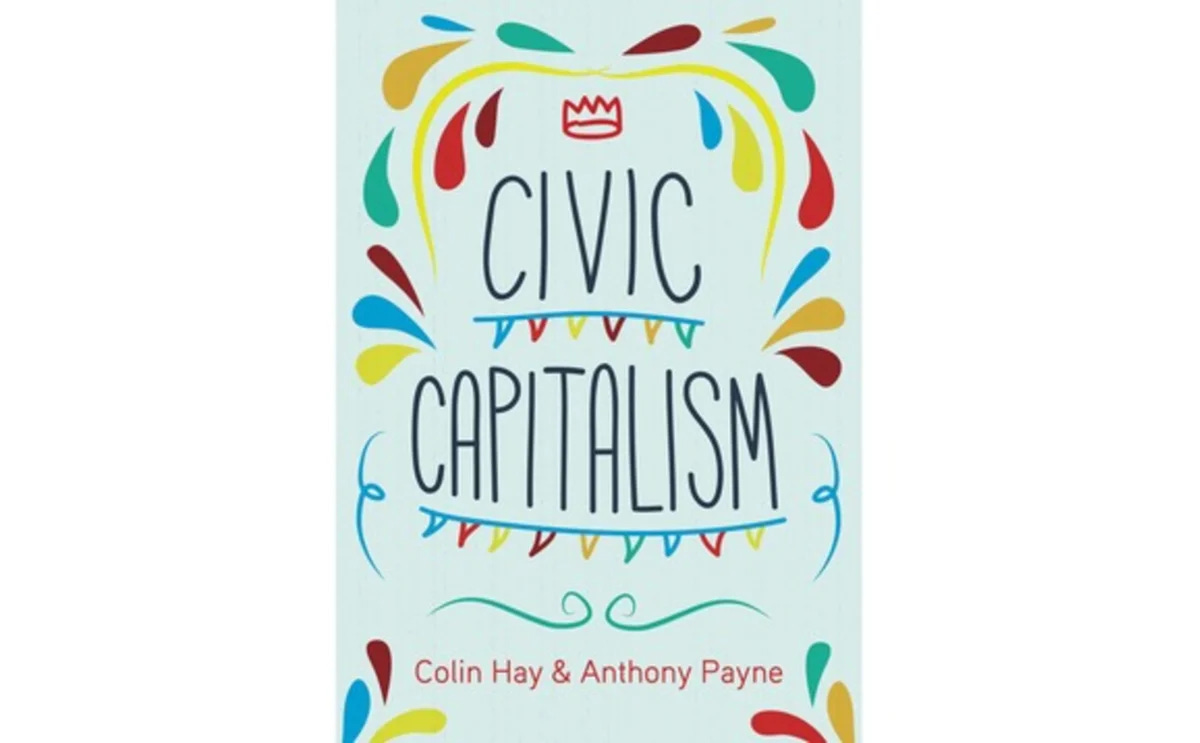Book Review of “Civic Capitalism,” by Colin Hay and Anthony Payne, 2015. Malden, MA: Polity Press. Cloth, 147 pages.
The book has to do with getting right what was done wrong...
Hay and Payne have assembled in this brief book 11 readings about capitalism—in addition to the realities of looking at modern economies through the lens of capitalism. The book is a result of a blog created and refreshed on the topic of “global crisis.” What went on leading up to—during—and after the stranglehold of 2008 is important to pick apart and explore.
Reading these older accounts and recommendations can make us more aware of current markets and crashes, disturbances and rebounds. In March 2025, have things settled down? Is this a time to sit down and relax? Maybe looking at capitalism again and again is part of our job.
Hay and Payne discuss and assemble readings here related to what they call “civic capitalism.” This is the “governance of the market, by the state, in the name of the people, to deliver collective public goods, equity, and social justice” (p. 3). They explain that this term has as its core the requirement that citizens must now “…ask what we can do for us and not what capitalism can do for us” (p. 4). Citizens must turn around the notion that they serve capitalism and must respond to its rules
This, in a nutshell, describes what the spirit of this book is and what the readings cover. The book deals further with the implications for all economies since commerce among nations is so complex later—and certainly true now.
The book has to do with getting right what was done wrong. The book contains a variety of readings current on the disastrous complications of the 2008 recession and away from a traditional growth model and toward one that takes into account more cultural differences worldwide, the context in which growth (or on-growth happens) and the social side of capitalism.
Without giving away too much content in this review, I will say that there is very interesting information to read about here related to the workings of civic capitalism, and one does not need to be an expert in Economics to understand the explanations and recommendations coming from these savvy people. This is a readable and essential book for social workers and educators to grab onto. We must understand much more about the world economic situation if we are to be able to help struggling families, sway political thought, make changes in society, influence others, and convince elected officials how to vote.
These are all activities in which counselors and educators must be involved. I maintain that we as advocates for the homeless and other marginalized groups must be involved in them at least to some extent. Social workers, counselors, and street workers can indeed get a handle on all of this to be able to make a big difference out there. Teachers, administrators, and others who teach other persons at whatever level need to have a good sense of how we got to where we are financially and some ideas on how to move ahead.
Although the contributors are a little idealistic at some points (can one person really change the international flow of dollars for investment? Really?) they nonetheless do explain a great deal of information that is essential for understanding the benefits, drawbacks, workings, and potential of capitalism.
It is up to the social worker and counselor to riddle this content out to be able to communicate it to others and to discuss it with both colleagues and elected officials. Being armed in any discussion is a big part of their work.
In addition, it is possible for the educator to read this assembly of authentic texts and see how to incorporate them in their own worldview, use them in their plans to influence others, write lesson plans for more advanced level high school courses, make use of them in courses for college students, and take from the readings information good for use in debates and negotiations with other professionals interested in discussing and working on the work world economy. At least in some smaller fashion.
I recommend the book and especially the introductory chapter on “civic capitalism” because of the clarity and the definitions found there. Hay and Payne are able to explain a great deal of technical information in that chapter so that the reader will be comfortable diving into the discussions of big changes. Those big changes—mainly in perspective—make up the rest of the readings in the book.





